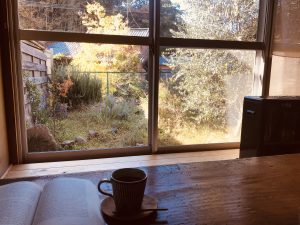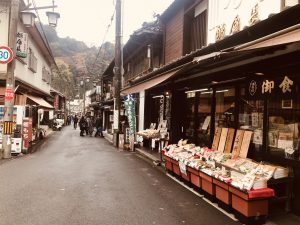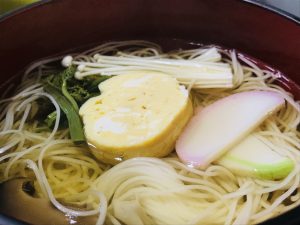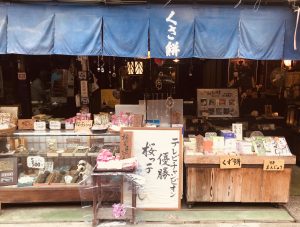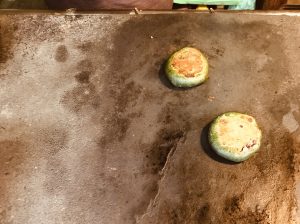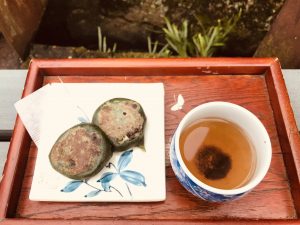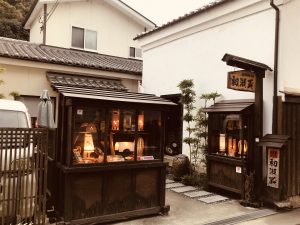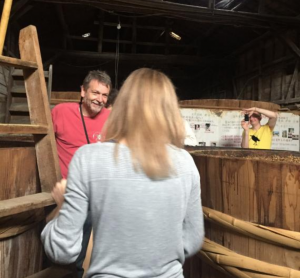
Soy sauce is one of the fundamental ingredients in Japanese cuisine. It is so common in Japan that it is easily over-looked. It often plays a supporting role, like with sashimi or boiled vegetables. However, a high-quality soy sauce, or just the right one, can make all of the difference in how a dish tastes. In my area, locals are very particular about which soy sauce they use in their kitchen, and are often unwilling to change styles or brands.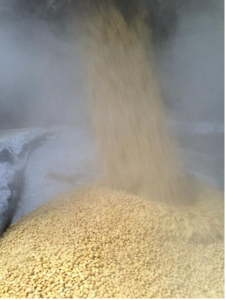
Have you ever wondered how soy sauce is made? As you might expect, it starts with soy beans, and includes flour, sugar, and a yeast called “koji-kin”. Though it is a long and complicated process, there are videos online that show you how to make it at home. Many of us will be spending more time at home for a little longer, so maybe learning from these videos and trying your hand at making soy sauce might be a lot of fun? If you ever come to Nara, we also have some experiences where you can visit soy sauce brewers, and see first-hand how they make this essential part of Japanese cuisine. You can meet the brewers themselves, and learn anything and everything you wanted to know about soy sauce. After the scents and sounds of brewing, you will finish the program by tasting some of the soy sauce, and can experience this fundamental ingredient with all five senses.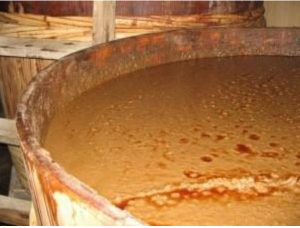
Knowing how something is made and where it comes from helps us appreciate things a lot more. In this case of soy sauce, it is seemingly everywhere, so just knowing a little more about this strong, black ingredient is likely to make your day a little more interesting.

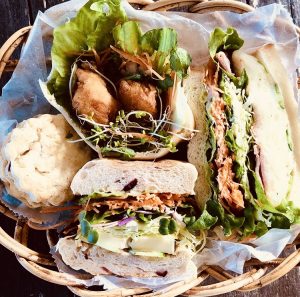 Just a short walk from both Kintetsu Nara Station and JR Nara Station, the area of Naramachi is known for its many traditional machiya-style buildings, narrow streets, and the calm air of the olden days. However, along these streets and within these buildings, there are very many new, creative, and fun places that add brilliant shades of color to what is already a beautiful town. One of those places is Mia’s Bread.
Just a short walk from both Kintetsu Nara Station and JR Nara Station, the area of Naramachi is known for its many traditional machiya-style buildings, narrow streets, and the calm air of the olden days. However, along these streets and within these buildings, there are very many new, creative, and fun places that add brilliant shades of color to what is already a beautiful town. One of those places is Mia’s Bread.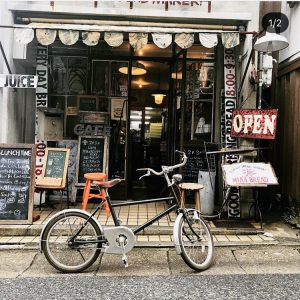 Just like how visitors who want a genuine experience of Japan will come all the way to Nara, locals who want genuine bread come to Mia’s Bread. With high-quality ingredients popular among the health conscious, this shop offers a wide range of breads, from loaves to bagels to pitas to baguettes to sandwiches. The sandwiches are jam-packed with vibrant vegetables, with the greens, pinks, yellows, and oranges catching anyone’s eye. The soups and salads are also very popular, which is evident by the need of a reservation for people who wish to have lunch there. With so many delicious flavors and aromas, brilliant shades of color, superbly textured breads, and local conversation, Mia’s Bread is a place we can take our time and enjoy with our five senses.
Just like how visitors who want a genuine experience of Japan will come all the way to Nara, locals who want genuine bread come to Mia’s Bread. With high-quality ingredients popular among the health conscious, this shop offers a wide range of breads, from loaves to bagels to pitas to baguettes to sandwiches. The sandwiches are jam-packed with vibrant vegetables, with the greens, pinks, yellows, and oranges catching anyone’s eye. The soups and salads are also very popular, which is evident by the need of a reservation for people who wish to have lunch there. With so many delicious flavors and aromas, brilliant shades of color, superbly textured breads, and local conversation, Mia’s Bread is a place we can take our time and enjoy with our five senses.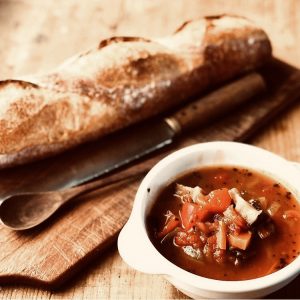 There are many delicious and traditional foods in Naramachi, and I of course recommend those as well. However, if you’ve had enough rice or noodles or mochi on this trip, I suggest taking a page from the locals, and checking out this delicious bread shop.
There are many delicious and traditional foods in Naramachi, and I of course recommend those as well. However, if you’ve had enough rice or noodles or mochi on this trip, I suggest taking a page from the locals, and checking out this delicious bread shop. 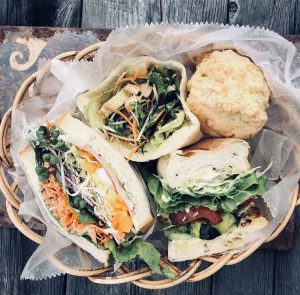
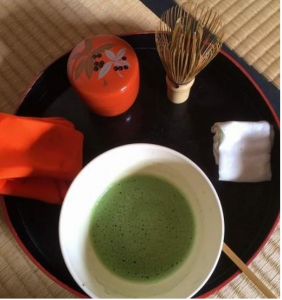 That is why some teachers decide to meet their students half way. By moving the practice to a table top and chairs, students can focus on elements of tea ceremony more important than sitting. Students can learn about the flow, the utensils, and the heart and mind of cha-no-yu. They can learn how the season is reflected in the utensils, decorations, and sweets. They can focus on appreciating the beauty of these items, and the efforts the host must have gone through to prepare them. Doing all this, in a painless way none the less, helps ensure that everyone has a nice time together.
That is why some teachers decide to meet their students half way. By moving the practice to a table top and chairs, students can focus on elements of tea ceremony more important than sitting. Students can learn about the flow, the utensils, and the heart and mind of cha-no-yu. They can learn how the season is reflected in the utensils, decorations, and sweets. They can focus on appreciating the beauty of these items, and the efforts the host must have gone through to prepare them. Doing all this, in a painless way none the less, helps ensure that everyone has a nice time together.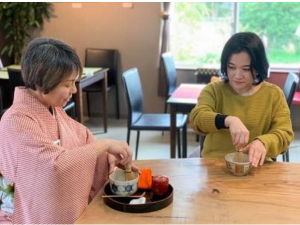 Nara is home to some of the most famous pottery and tea whisks in Japan, and produces lots of tea in its rolling hills, so its connection with tea ceremony goes back to the art’s beginnings. Perhaps one of the ways of keeping this tradition alive and well is to make it more accessible for newcomers, and we have a program that takes a step in that direction. Music Cafe Anges in Kashihara City offers participants the chance to learn about tea ceremony and whisk a bowl themselves in the comfort of a table and a chair. Participants don’t just learn about the process, but also the philosophy of this ancient art. With tea produced in Nara and traditional sweets from a popular local shop, it is a chance to comfortably experience a tea ceremony unique to this place and this time. If you are interested, please check the link below.
Nara is home to some of the most famous pottery and tea whisks in Japan, and produces lots of tea in its rolling hills, so its connection with tea ceremony goes back to the art’s beginnings. Perhaps one of the ways of keeping this tradition alive and well is to make it more accessible for newcomers, and we have a program that takes a step in that direction. Music Cafe Anges in Kashihara City offers participants the chance to learn about tea ceremony and whisk a bowl themselves in the comfort of a table and a chair. Participants don’t just learn about the process, but also the philosophy of this ancient art. With tea produced in Nara and traditional sweets from a popular local shop, it is a chance to comfortably experience a tea ceremony unique to this place and this time. If you are interested, please check the link below.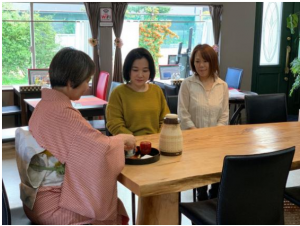
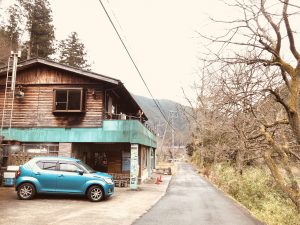

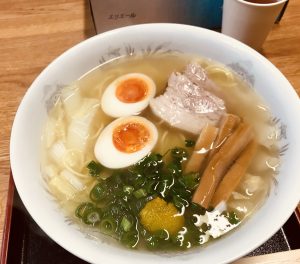
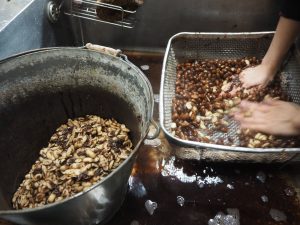 “Yokan” is a Japanese dessert made from mashed beans and gelatin, and often flavored and colored as well. Every winter, Asahikan in Kawakami Village makes its “yuzu yokan” from scratch. They boil the beans in a wood-fire pot, then rinse them and skin them before mashing them up to be used in the dessert. They continue to use a recipe and methods that have been passed down through generations, including picking the yuzu, a citrus fruit, from trees nearby. Flakes of the fruit’s yellow skin add a subtle flavor to the yokan’s sweetness, and a bright element to the already pink-colored dessert.
“Yokan” is a Japanese dessert made from mashed beans and gelatin, and often flavored and colored as well. Every winter, Asahikan in Kawakami Village makes its “yuzu yokan” from scratch. They boil the beans in a wood-fire pot, then rinse them and skin them before mashing them up to be used in the dessert. They continue to use a recipe and methods that have been passed down through generations, including picking the yuzu, a citrus fruit, from trees nearby. Flakes of the fruit’s yellow skin add a subtle flavor to the yokan’s sweetness, and a bright element to the already pink-colored dessert. 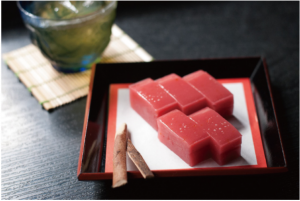 As a 130-year-old traditional Japanese inn, Asahikan offers guests the opportunity to experience what staying in the countryside might have been like in a previous era. With its traditional architecture, including a stunning garden on its second floor, you can walk the same wooden halls and stay in the same tatami rooms as its many visitors have done for over a century.
As a 130-year-old traditional Japanese inn, Asahikan offers guests the opportunity to experience what staying in the countryside might have been like in a previous era. With its traditional architecture, including a stunning garden on its second floor, you can walk the same wooden halls and stay in the same tatami rooms as its many visitors have done for over a century.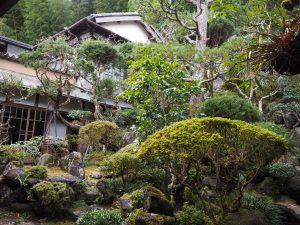 If you are looking for some outdoor fun as well, we offer an experience in which you can stay at Asahikan, chop some bamboo from its mountain grove, and turn that bamboo into your own lunchbox. You’ll take that lunch with you when you go out to explore the wide variety of moss in our village, and then create your own moss terrarium. Young or old, all ages are welcome!
If you are looking for some outdoor fun as well, we offer an experience in which you can stay at Asahikan, chop some bamboo from its mountain grove, and turn that bamboo into your own lunchbox. You’ll take that lunch with you when you go out to explore the wide variety of moss in our village, and then create your own moss terrarium. Young or old, all ages are welcome!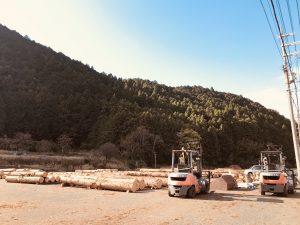 Cafe Le Repos isn’t in the first place you’d expect a cafe to be. A few minutes up the Yoshino River from Kintetsu Yamato-Kamiichi Station, we make a tight right turn to head over the river on the Imosebashi Bridge. After crossing the bridge, we see a lumber auction yard, with dozens of large Yoshino cedar logs lined up. To the left is an auto shop, and it’s in a corner of that auto shop that I found the cozy Cafe Le Repos.
Cafe Le Repos isn’t in the first place you’d expect a cafe to be. A few minutes up the Yoshino River from Kintetsu Yamato-Kamiichi Station, we make a tight right turn to head over the river on the Imosebashi Bridge. After crossing the bridge, we see a lumber auction yard, with dozens of large Yoshino cedar logs lined up. To the left is an auto shop, and it’s in a corner of that auto shop that I found the cozy Cafe Le Repos.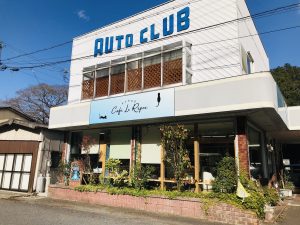 Despite having just opened a few months ago, they were busy with regular customers chatting away at the center table. The inside of the cafe is a beautiful example of how the wood, grown in mountains up the river and gathered as logs outside, can be used to provide a warm and comfortable dining environment. The owner informed me that the day’s special was sold out, so our only option was the keema curry. It was spicy enough to wake me up, while still being incredibly flavorful. My lunch also included a small cup of somen noodles and radish pickles, which served to balance out the spice of the keema curry. When the owner wasn’t busy in the kitchen, she would casually chat with us or the group of regulars at the large table.
Despite having just opened a few months ago, they were busy with regular customers chatting away at the center table. The inside of the cafe is a beautiful example of how the wood, grown in mountains up the river and gathered as logs outside, can be used to provide a warm and comfortable dining environment. The owner informed me that the day’s special was sold out, so our only option was the keema curry. It was spicy enough to wake me up, while still being incredibly flavorful. My lunch also included a small cup of somen noodles and radish pickles, which served to balance out the spice of the keema curry. When the owner wasn’t busy in the kitchen, she would casually chat with us or the group of regulars at the large table.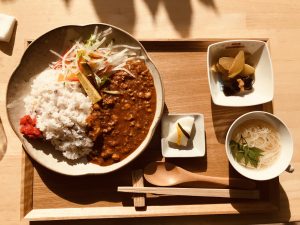 Located near the auction yard, saw mills, and auto shop, Cafe Le Repos seems like it’d be a warm lunch escape for the many people working hard outside in the area. However, I also think it’s worthwhile for visitors to the area to make the journey over the Imosebashi Bridge, across the Yoshino River, and relax in a place a little out of the ordinary. Even if it’s your first visit, I hope you can feel as comfortable as one of the locals.
Located near the auction yard, saw mills, and auto shop, Cafe Le Repos seems like it’d be a warm lunch escape for the many people working hard outside in the area. However, I also think it’s worthwhile for visitors to the area to make the journey over the Imosebashi Bridge, across the Yoshino River, and relax in a place a little out of the ordinary. Even if it’s your first visit, I hope you can feel as comfortable as one of the locals.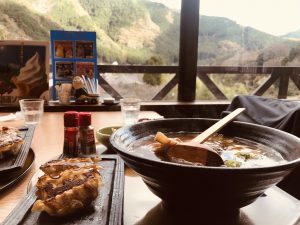 Another term for ramen in Japan is Chuka-men, or “Chinese noodles”. I ordered the Chuka-men combination with gyoza, and enjoyed the great scenery while I waited for my food. Sato offers a wide view of the endless mountains of Yoshino cedar, and the calming Yoshino River running below.
Another term for ramen in Japan is Chuka-men, or “Chinese noodles”. I ordered the Chuka-men combination with gyoza, and enjoyed the great scenery while I waited for my food. Sato offers a wide view of the endless mountains of Yoshino cedar, and the calming Yoshino River running below. 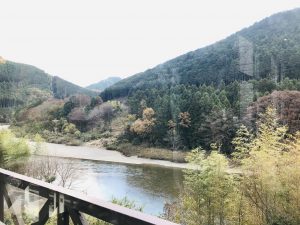 My food eventually arrived on a tray that seemed like it could cover the entire table, and in addition to my noodles and gyoza, included rice, stewed vegetables, and pickles. My bowl of noodles had a soy sauce based broth with slices of pork, half a hard-boiled egg, green onions, and popular Japanese vegetables like napa cabbage and bamboo shoots. The gyoza was perfect! Crispy, flavorful, and huge! After finishing everything on my tray, I wasn’t sure if I’d be able to walk out the door.
My food eventually arrived on a tray that seemed like it could cover the entire table, and in addition to my noodles and gyoza, included rice, stewed vegetables, and pickles. My bowl of noodles had a soy sauce based broth with slices of pork, half a hard-boiled egg, green onions, and popular Japanese vegetables like napa cabbage and bamboo shoots. The gyoza was perfect! Crispy, flavorful, and huge! After finishing everything on my tray, I wasn’t sure if I’d be able to walk out the door.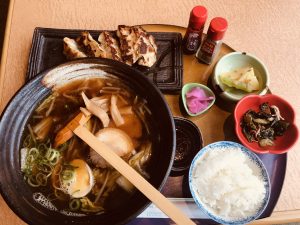 Signed photos and autographs near the entrance show how popular of a stop Sato is among celebrities who pass through. Sato is also a very popular place among the locals, and even with all that fame, the staff always makes an effort to remember faces and names. Even if it is your one and only visit there, I am sure they will welcome you very warmly! As I mentioned, they still have a giant menu, so I recommend going there multiple times and trying something new every time.
Signed photos and autographs near the entrance show how popular of a stop Sato is among celebrities who pass through. Sato is also a very popular place among the locals, and even with all that fame, the staff always makes an effort to remember faces and names. Even if it is your one and only visit there, I am sure they will welcome you very warmly! As I mentioned, they still have a giant menu, so I recommend going there multiple times and trying something new every time.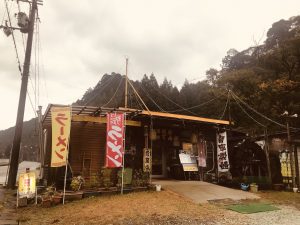 Or at least, that’s how it feels when I visit Yottenka in Yoshino Town. It’s a small, stand-alone wooden shop, attached to old truck beds, and with a wooden water wheel in front. Inside is the kind of warm atmosphere that is difficult for visitors to Japan to discover on their own. Shelves of comic books, a box of local fruit, a counter facing the kitchen, and a well-worn center table. In addition to standard flavors like miso, soy sauce, and salt ramen, they have a special sesame ramen, a spicy beansprout ramen, and even chilled ramen for hot summer days.
Or at least, that’s how it feels when I visit Yottenka in Yoshino Town. It’s a small, stand-alone wooden shop, attached to old truck beds, and with a wooden water wheel in front. Inside is the kind of warm atmosphere that is difficult for visitors to Japan to discover on their own. Shelves of comic books, a box of local fruit, a counter facing the kitchen, and a well-worn center table. In addition to standard flavors like miso, soy sauce, and salt ramen, they have a special sesame ramen, a spicy beansprout ramen, and even chilled ramen for hot summer days.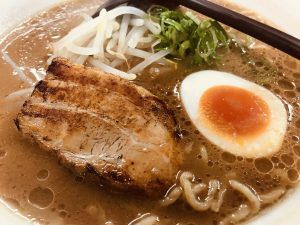 When I went there for lunch the other day, I ordered the miso ramen and gyoza set. The noodles seemed to absorb the flavorful miso soup, as did the slice of pork, which slowly softened as I saved it for last. The gyoza came out hot and fresh, smelling of garlic as I dipped each bite into the spicy red oil. I said “gochisosama” to kind old man and exited the shop with a full stomach.
When I went there for lunch the other day, I ordered the miso ramen and gyoza set. The noodles seemed to absorb the flavorful miso soup, as did the slice of pork, which slowly softened as I saved it for last. The gyoza came out hot and fresh, smelling of garlic as I dipped each bite into the spicy red oil. I said “gochisosama” to kind old man and exited the shop with a full stomach. 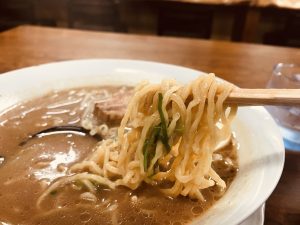
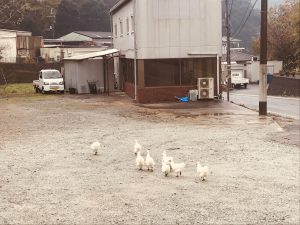
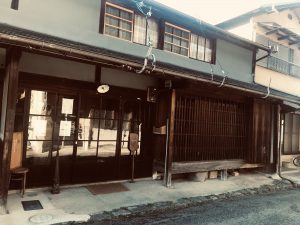 The city of Uda covers a vast amount of space in southern Nara prefecture, and includes mountains, rice fields, and many other crops. In the heart of its Oh-Uda area is a large souvenir shop, an onsen hot spring bath, and a traditional townscape. There are some unique restaurants and cafes in this townscape, and I had the pleasure of visiting one just the other day.
The city of Uda covers a vast amount of space in southern Nara prefecture, and includes mountains, rice fields, and many other crops. In the heart of its Oh-Uda area is a large souvenir shop, an onsen hot spring bath, and a traditional townscape. There are some unique restaurants and cafes in this townscape, and I had the pleasure of visiting one just the other day. 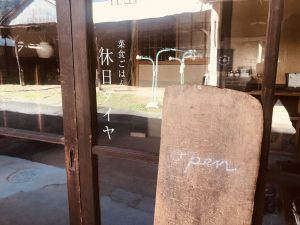 Kyujitsu-Daiya, or “holiday schedule”, is a vegan cafe and restaurant located in that townscape. In addition to not using any animal products, they make the effort to use organic vegetables, and even organic coffee. It is a warm and cozy environment located in a traditional Japanese house, with a number of quiet, unique spots for guests to sit and eat.
Kyujitsu-Daiya, or “holiday schedule”, is a vegan cafe and restaurant located in that townscape. In addition to not using any animal products, they make the effort to use organic vegetables, and even organic coffee. It is a warm and cozy environment located in a traditional Japanese house, with a number of quiet, unique spots for guests to sit and eat. 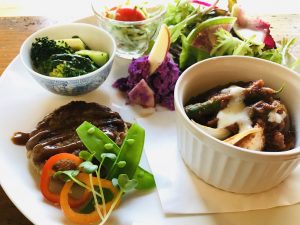 I sat in a floor seat facing the win dow of a small garden, and after I’d read a few pages in my book, the owner brought out my lunch and explained each item. It included a hamburger patty made from garbanzo beans and lotus root, a sweet potato salad made from apples, tofu okara, and soy milk mayonnaise, a bowl of brown rice, and soup made from homemade miso. It’s the kind of meal that makes you want to take your time and enjoy every bite.
I sat in a floor seat facing the win dow of a small garden, and after I’d read a few pages in my book, the owner brought out my lunch and explained each item. It included a hamburger patty made from garbanzo beans and lotus root, a sweet potato salad made from apples, tofu okara, and soy milk mayonnaise, a bowl of brown rice, and soup made from homemade miso. It’s the kind of meal that makes you want to take your time and enjoy every bite. 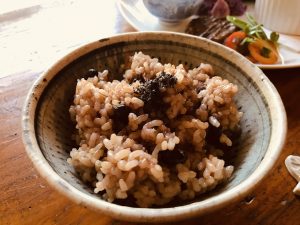
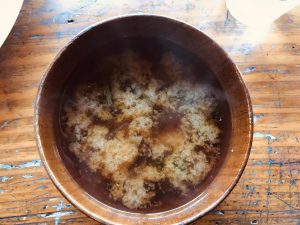 After my lunch, I had a hot cup of hot organic coffee while I sat by the window and continued reading. In a more touristy location, I might not have been able to take my time and enjoy such a quiet place. Homemade miso, local vegetables, I felt like I had a nice chance to appreciate the beauty the countryside has to offer, especially in southern Nara.
After my lunch, I had a hot cup of hot organic coffee while I sat by the window and continued reading. In a more touristy location, I might not have been able to take my time and enjoy such a quiet place. Homemade miso, local vegetables, I felt like I had a nice chance to appreciate the beauty the countryside has to offer, especially in southern Nara.